International Journal of Agricultural Science and Food Technology
Growth and yield responses of groundnut to different rates of NPK fertilizer at Umudike
Orji KO1*, Chukwu LA2 and Ogbu JU3
2Department of Agricultural Technology, Akanu Ibiam Federal Polytechnic, Unwana, Ebonyi State, Nigeria
3Department of Horticulture and Landscape Technology, Federal College of Agriculture, Ishiagu, Ebonyi State, Nigeria
Cite this as
Orji KO, Chukwu LA, Ogbu JU (2022) Growth and yield responses of groundnut to different rates of NPK fertilizer at Umudike. Int J Agric Sc Food Technol 8(1): 072-077. DOI: 10.17352/2455-815X.000147Copyright License
© 2022 Orji KO, et al. This is an open-access article distributed under the terms of the Creative Commons Attribution License, which permits unrestricted use, distribution, and reproduction in any medium, provided the original author and source are credited.The field trial was carried out in the 2014 cropping season in the Research and Training Farm (Eastern Farm) of the Michael Okpara University of Agriculture, Umudike to assess the effect of NPK 15: 15: 15 fertilizer rates on the biological and economic yields of groundnut (Ogoja spreading cultivar). The experiment was laid out in Randomized Complete Block Design (RCBD) with three replicates. Two viable seeds were sown at 40cm×40cm in a hole/hill along the crest of a 10m ridge with 0.5m spacing between two ridges on 28th June 2014. NPK 15:15:15 fertilizer was applied to each hill on 26th July at the rates of 0, 50, 100, 150, 200, and 250 kg/ha using the ring method. Field data were taken on the total fresh weight (g) of biomass/hill, number of pods/hill, fresh weight (g) of pods/hill, number of seeds/hill, 100 seeds` weight (kg/ha), and harvest index. The field data collected were subjected to Analysis of Variance (ANOVA), Coefficient of Variation (CV), and line graphs with error bars using Genstat 12 edition and Excel Package, respectively. Fisher`s list significant difference (F-LSD) was applied to detect a significant difference between two means (P= 0.05). The result showed that the soil was texturally sandy loam with a pH of 5.20. The soil was also low in organic matter, total nitrogen, and potassium. But, it was high in phosphorus and exchangeable acidity. The application of NPK fertilizer significantly influenced (P≤0.05) the total fresh weight of biomass of groundnut with 150kg/ha giving the highest total fresh weight of biomass/hill. In the same vein, the application of NPK fertilizer at 250kg/ha also significantly increased (P≤0.05) the number of pods/hill. However, NPK fertilizer application did not significantly affect (P≥0.05) the total fresh weight of pods/hill, number of seeds/hill, 100 seed weight/hill, and harvest index.
Introduction
Groundnut or peanut [Arachis hypogaea (L.)] is an herbaceous, self-pollinated, dicotyledonous legume that belongs to the family of crops called leguminoseae and subfamily known as Papilionaceae [1]. It is also called monkey nut. It originated in Southern Bolivia and Northern Argentina [2]. It is almost grown in the tropics and subtropics of the world [3]. Major groundnut-producing- countries are China, India, Nigeria, the U.S.A., Indonesia, Sudan, and Senegal. The optimal soil temperature for good germination and vegetative growth is 27°C–30°C and 24°C–27°C for reproductive growth. Low temperature at the time of sowing delays germination, and increases the likelihood of seed and seedling diseases and of infestation by sucking pests. An evenly distributed annual rainfall between 450mm and 1250mm per annum is required for good growth and yield [4]. Groundnuts do well on deep, well-drained sandy, sandy loam, or loamy sand soils with a pH ranging between 5.3-6.5 [5]. It is one of the most important crops that have the ability to thrive on newly reclaimed sandy soils as a legume of high nutritive value as well as being a source of edible oil [6]. Although groundnut is grown mainly for its seed, with some 40-50% oil content, all other plant parts are useful as food or animal feed [7]. Arslan considered groundnut haulm as the most important of its by-products that can be used to supply feed to livestock and its hay providing extra income to smallholder farmers [8]. Groundnut being an oilseed crop is used for producing vegetable oil for preparing stew and frying eggs, meat, fish, yam, sweet potato, cocoyam chips as well as bean cake, “Akara”. It is also used for the production of groundnut cake, “Kwelee-Kwelee” after the extraction of its oil. Groundnut is a good source of protein and contributes to satisfying protein requirements mainly in developing nations [9]. Groundnut seeds contain 40-50% fat, 20-50% protein, and 10-20% carbohydrate depending on the variety and some essential minerals as well as vitamins [10]. It is also used for preparing animal feed and other industrial purposes. Nevertheless, poorly stored groundnut seeds can be infected with mycotoxins (toxic metabolites produced by certain molds) called aflatoxins (B1, B2, G1, and G2) caused by Aspergillus flavus and Aspergillus parasiticus. Aflatoxin B1 is most toxic. These storage fungi that grow at lower moisture levels less than 10 % are hazardous to both man and animals. Aflatoxins are carcinogenic and mutagenic [10]. Balanced use of fertilizers is said to play an important role in sustainable crop production [11]. A good crop production would depend upon the time and appropriate amount of fertilization [12]. One of the important factors influencing the production of crops in the tropics is soil fertility such that soil productivity is hampered by the deficiencies of nutrients such as nitrogen, phosphorus, and potassium [13]. One of the important nutrients in groundnut production is phosphorus because of its large effects on seed oil content, and as such, phosphorus in excess or deficiency may reduce oil percentage [11]. NPK fertilizer application rate of 20kg N+ 26kg P + 26Kg K resulted in a wider crop canopy which translated into higher growth rates [14,15]. Migawer and Mona [16]. Also reported significant differences in growth, yield, and yield components of two groundnut cultivars with different combinations of NPK fertilizer in newly reclaimed loamy sand soil. Cheema, et al. [17]. Had also reported that application of gypsum alone or in combination with NPK significantly (P<0.05) increased pod yield, shelling percentage, and percentage of sound mature kernels in groundnut.
Problem statement
Groundnut crop plant is a legume that can fix nitrogen in the soil is perceived by many researchers as a crop that does not require nitrogenous fertilizers for proper growth and development. In poor or marginal soil, it needs nitrogenous fertilizers for proper growth, development, and yield production. However, there is no documentation on the optimum rate of NPK 15:15:15 fertilizer required for optimum yield production that has been recommended to local farmers for adoption.
Objectives of the study
Given the above reasons, the research was aimed at assessing the effect of NPK 15: 15: 15 fertilizer rates on the biological and economic yield as well as harvest index (HI) of groundnut (spreading type) at Umudike agro-ecology.
Materials and methods
A field trial was conducted at the eastern farm of the research and training of Michael Okpara University of Agriculture, Umudike. The site lies on longitude 07º 31´ E and latitude 05º 31´ N with an altitude 122m above sea level (GPS). The annual rainfall is between 1500 and 1900mm with temperature ranges between 27 and 30°C. A piece of land measuring 10x4m was slashed, plowed, harrowed, and ridged with a tractor –coupled implements. The experiment was laid out in randomized complete block design (RCBD) with three replicates. Ogoja spreading type of groundnut seeds was purchased from the National Cereal Research Institute of Nigeria, Umudike Sub-Station, Abia State. Seeds were soaked in water for 2 minutes and the ones that floated were discarded as chaffs. Two viable seeds were sown at 40cm x 40cm in a hole/hill along the crest of a 10m ridge with 0.5m spacing between two ridges. NPK 15: 15: 15 fertilizer was applied to each hill at the rates of 0, 50, 100, 150, 200, and 250 kg/ha using the ring method. Field data were taken on the total fresh weight (g) of biomass/hill, number of pods/hill, fresh weight (g) of pods/hill, number of seeds/hill, 100 seeds` weight (kg/ha), and harvest index. The field data collected were subjected to analysis of variance (ANOVA), coefficient of variation (CV), and line graphs with error bars using Genstat 12 edition and Excel Package, respectively. Fisher`s list significant difference (F-LSD) was applied to detect a significant difference between two means (p= 0.05).
Results
Data in Table 1 showed that the soil was texturally sandy loam with a pH of 5.20. The soil was low in organic matter, total nitrogen, and potassium. But, it was high in phosphorus and exchangeable acidity. The result from pre-planting soil analysis proved the need for nitrogenous fertilizer application in the research. Data in Table 2, Figure 1 showed that the application of NPK fertilizer significantly influenced (P≤0.05) the total fresh weight of biomass of groundnut with 150kg/ha giving the highest total fresh weight of biomass/hill. It was observed to be the critical concentration level of the NPK fertilizer application in this research because below it there was a downward decrease in the total fresh weight of biomass/hill. In the same vein, the application of NPK fertilizer at 250kg/ha also significantly increased (P≤0.05) the number of pods/hill (Table 2, Figure 2). There was a varying trend of increment on the number of pods/hill by fertilizer application. However, there were non-significant effects (P≥0.05) by fertilizer application on total fresh weight of pods and number of seeds/hill, although 100 and 150kg/ha of NPK fertilizer application gave the highest weight of fresh pods/hill and highest number of seeds/hill, respectively (Table 2, Figures 3,4). Also, NPK fertilizer application did not significantly affect 100 seed weight and harvest index of groundnut, nevertheless, the highest seed weight/ha was obtained where 50 kg/ha of NPK fertilizer was applied, while the highest harvest index was obtained where NPK fertilizer was not applied (Table 2, Figures 5,6).
Discussion
Data in Table 1 showed that the soil of the site was sandy loam in texture and strongly acidic. The soil had high phosphorus content and base saturation. It contained very low nitrogen and potassium as well as calcium and magnesium according to the rating of Physico-chemical characteristics of soil by Kparwang et al. [18]. The high content of phosphorus was not enough to effect any change in the variables, hence no significant differences were achieved in most of the variables. The textural class of the site was ideal for groundnut production which agreed with the reports of Katsaruware1 and Mabwe [19]. Who observed that groundnut is one of the acid-tolerant crops that thrive in a well-drained light sandy loam. There was a significant difference in the total fresh weight of biomass by the application of 150kg/ha NPK 15: 15: 15 fertilizer. There was a trend of increase from 50 to 150 kg/ha in biological yield and beyond this level, there was a downward decrease in the total fresh weight of biomass. This trend of increase indicated that peanut requires up to 150kg/ha NPK fertilizer for optimum biomass yield. This result agreed with the result obtained by Habib [20]. Who reported a significant effect on fresh weight of shoots of fishtail palm from the application of NPK fertilizer at 4g of 40 cm plastic pot (Figure 2). Figures 3,4 showed that NPK fertilizer did not significantly influence the total fresh weight of pods/hill and the number of seeds/hill at harvest. The reason could be attributed to the shading effect of the significant production of above biomass which reduced the magnitude of light interception by the source (leaves) resulting in poor production and translocation of photosynthates to the sink (pods and seeds). These results were in agreement with the results obtained by Hossain, et al. [21]. And Bala, et al. [15]. Who reported non-significant effects on the number of pods/plant and seed weight, although these results disagreed with the results of Jakusko and Dakato [22]. Who reported a significant effect on 100 seeds` weight of Bambara groundnut with NPK fertilizer. There was no significant difference among the 100 seed weight and harvest index, although 50kg/ha NPK fertilizer produced the highest mean value of seed weight per hectare (Figure 5). There was a trend of decrease in 100 seed weight as the level of NPK fertilizer increased. This might be due to excessive cloud cover which reduced light intensity needed for enough production of photosynthates in the above biomass for seed production because the crop was grown in the peak of the rainy season which negates the reports of Hamidou [23]. Who observed that groundnut is best grown in semi-arid eco-systems where rainfall is low and erratic. More so, groundnut being a legume does not require excess nitrogen for growth and seed production. The highest harvest index value was obtained where fertilizer was not applied, although it was non-significant (Figure 6). This entails that groundnut does not require much NPK 15:15:15 fertilizer for seed production as the fertilizer applied produced significant biomass without corresponding significant seed production which could be traced to the low calcium content of the site which is very essential for pod production [19]. Hepperly, et al. [24]. Reported that chemical fertilizers are beneficial inputs supplied to get higher crop productivity, but a high dose of chemical fertilizers is associated with a reduction in soil properties and crop yields over time. It was observed that many pods without filling were produced as the level of NPK fertilizer increased which proved the effect of calcium deficiency in groundnut-grown soil. The application of NPK fertilizer here also resulted in delayed maturity of groundnut with ever greenness.
Conclusion
The cultivation of groundnut (Ogoja spread cultivar) with NPK 15:15:15 fertilizer in the sandy loam of Umudike produced significant differences in the total fresh weight of biomass and number of pods/hill at the rates of 150kg/ha and 250kg/ha, while other variables were statistically the same. Therefore, NPK 15: 15: 15 fertilizer is not ideal for groundnut production as it encourages profuse vegetative growth without a corresponding increase in seed production. However, I would recommend that more research should be conducted with NPK fertilizer on this site to confirm this result.
- Reddy SR (2012) Agronomy of field crops. 343-384.
- Uguru MI (2011) Crop Production Tools, Techniques and Practice, Rev. ed. Full Pub. Com. 55-57.
- Balasubrsmaniyan P (2011) Principles and Practices of Agronomy 40.
- Ajeigbe HA, Waliyar F, Echekwu CA, Ayuba K, Motagi BN, et al. (2015) A Farmer's Guide to Groundnut Production in Nigeria. Patancheru 502 324, Telangana, India: International Crops Research Institute for the Semi-Arid Tropics 36. Link: https://bit.ly/3Bppmic
- Farm Management Handbook (2010) Causeway, Harare, Zimbabwe.
- Desire TV, Liliane MT, Le prince NM, Jonas PI, Akoa A (2010) Mineral nutrient status, some quality and morphological characteristic changes in peanut (Arachis hypogaea L.) cultivars under salt stress. Afr J Environ Sci Tech 4: 471-479. Link: https://bit.ly/3uTeVlB
- Ahmad N, Rahim M, Khan U (2007) Evaluation of different varieties, seed rates and row spacing of groundnut, planted under agro-ecological conditions of Malakand division. J Agron 6: 385-387. Link: https://bit.ly/3uUf6gH
- Arslan M (2005) Effects of haulm cutting time on haulm and pod yield of peanut. J Agron 4: 39-43. Link: https://bit.ly/3HZyAE7
- Eapen S (2003) Regeneration and genetic transformation in peanut: Current status and future prospects. 165-186. In Jaiwal, PK and RP Singh (ed) Applied genetic leguminous biotechnology. Kluwar Academic Publisher, Netherlands. Link: https://bit.ly/3BqVli3
- Okello DK, Biruma M, Deon CM (2010) Overview of groundnuts research in Uganda: Past, present and future. Afr J Biotechnol 9: 650-654. Link: https://bit.ly/3GPITte
- Afridi MZ, Jan MT, Ahmad I, Khan MA (2002) Yield components of canola response to NPK Nutrition. J Agron 1: 133-135. Link: https://bit.ly/34IAWJs
- Jan MT, Khan S (2000) Response of wheat yield components of N-fertilizer their levels and application time. Pak J Biol Sci 3: 1227-1230. Link: https://bit.ly/3sPMIJJ
- Wandahwa PI, Tabu IM, Kendagor MK, Rota JA (2006) Effects of intercropping and fertilizer type on growth and yield of soybean (Glycine max L. merrill). J Agron 5: 69-73. Link: https://bit.ly/3rV0dsv
- Augadi WV, Pabl SV, Sheelavantar MN, Chittapur BM (1998) Effect of NPK fertilizer levels and split application of N on growth and yield of groundnut in Vertisol soil under irrigation. Karnataka J Agric 3: 9-14.
- Bala HMB, Ogunlela VB, Tanimu B, Kuchinda NC (2011) Response of Two Groundnut (Arachis hypogaea L.) Varieties to Sowing Date and NPK Fertilizer Rate in a Semi-Arid Environment: Growth and Growth Attributes. Asian J Res Crop Sci 3: 141-150. Link: https://bit.ly/3uWZj0s
- Migawer EA, Mona AMS (2001) Performance of Two Peanut Cultivars and Their Response to NPK Fertilization in Newly Reclaimed Loamy Sand Soil. J Agric Sci Mansoura Univ 26: 6653–6667. Link: https://bit.ly/3gSl89j
- Cheema NM, Ahmad G, Khan MA, Chaudhary GA (1991) Effect of gypsum on the pod yield in groundnut. Parkistan Journal of Agricultural Resources 12: 165-168.
- Kpamwang T, Raji BA, Odunze AC, Chude VO (2001) Properties, classification and Agricultural potentials of ustults and Tropepts on a sedimentary Toposequence in the benue. Nig J Soil Res 2: 58-85. Link: https://bit.ly/36n3icD
- Katsaruware RD, Mabwe C (2014) Response of Groundnut (Arachis hypogea) to Inorganic Fertiliser Use in Smallholder Farming of Makonde District, Zimbabwe. J Biol Agric Healthc 4: 78–82. Link: https://bit.ly/3rVnzyh
- Habib A (2012) Effect of NPK and Growing Media on Growth and Chemical Composition of Fishtail Palm (Caryota mitis Lour). Life Sci J 9: 3159-3168. Link: https://bit.ly/3gOBHmC
- Hossain M, Hamid A, Hoque MM, Nasreen S (2007) Influence of nitrogen and phosphorus fertilizers on the productivity of groundnut. Bangladesh J Agric Res 32: 283-290. Link: https://bit.ly/3gPAhbq
- Jakusko BB, Dakato ME (2015) Effects of NPK Fertilizer Rates on Seed Yield of Some Local Cultivars of Bambara Groundnut (Vigna subterranean (L.) Verdc.). Int J Chem Environ Biol Sci (IJCEBS) 3: 2320-4087. Link: https://bit.ly/3sJWwoU
- Hamidou F, Halilou O, Vadez V (2012) Assessment of groundnut under combined heat and drought stress. J Agron Crop Sci 199: 1- 11. Link: https://bit.ly/3Bq24ZD
- Hepperly YP, Lotter D, Ulsh CZ, Siedel R, Reider C (2009) Compost, Manure and Synthetic Fertilizer Influences Crop Yields, Soil Properties, Nitrate Leaching and Crop Nutrient Content. Compost Sci Util 17: 117–126. Link: https://bit.ly/33r1Kx0
Article Alerts
Subscribe to our articles alerts and stay tuned.
 This work is licensed under a Creative Commons Attribution 4.0 International License.
This work is licensed under a Creative Commons Attribution 4.0 International License.
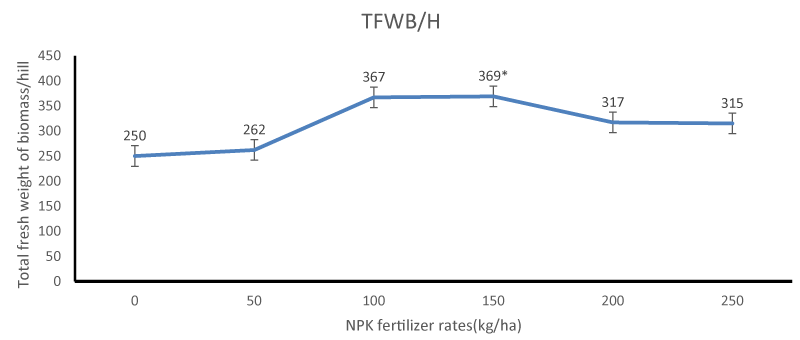
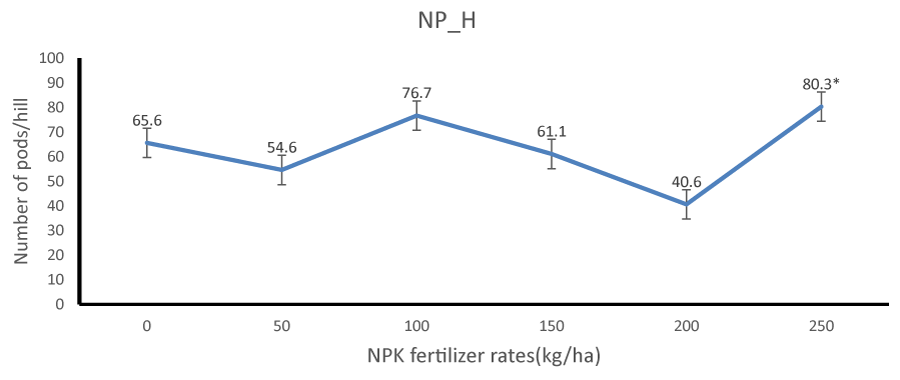
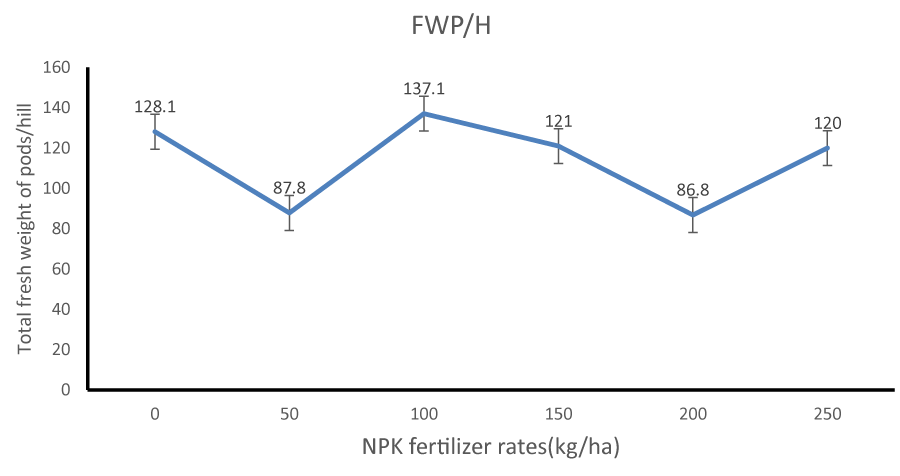
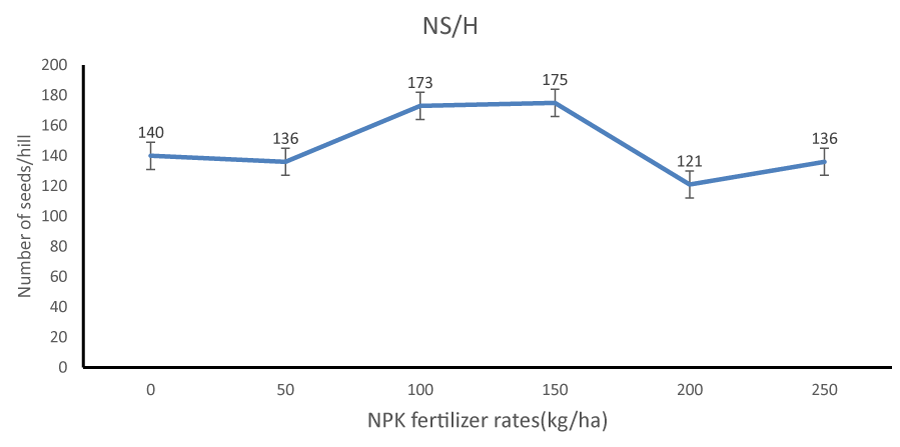
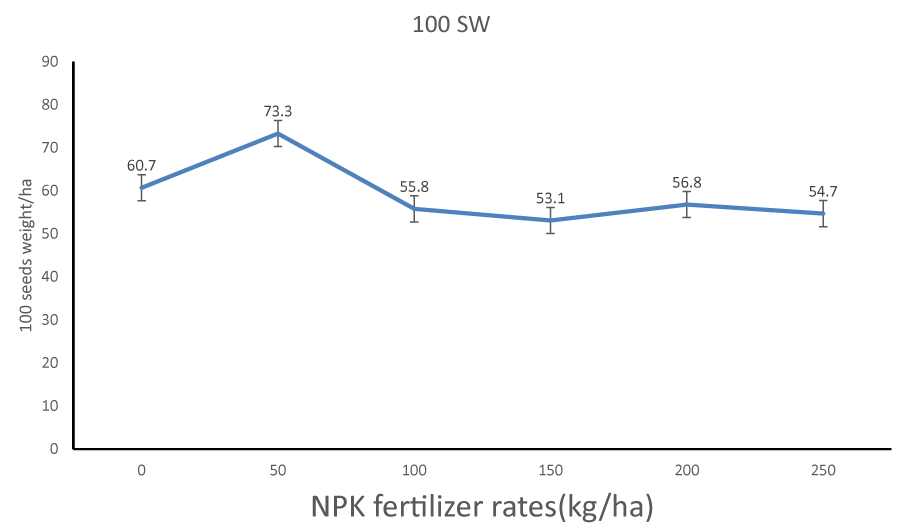
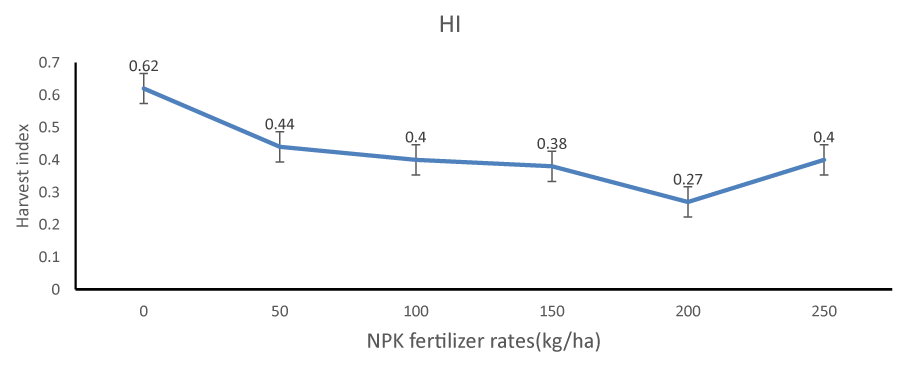

 Save to Mendeley
Save to Mendeley
